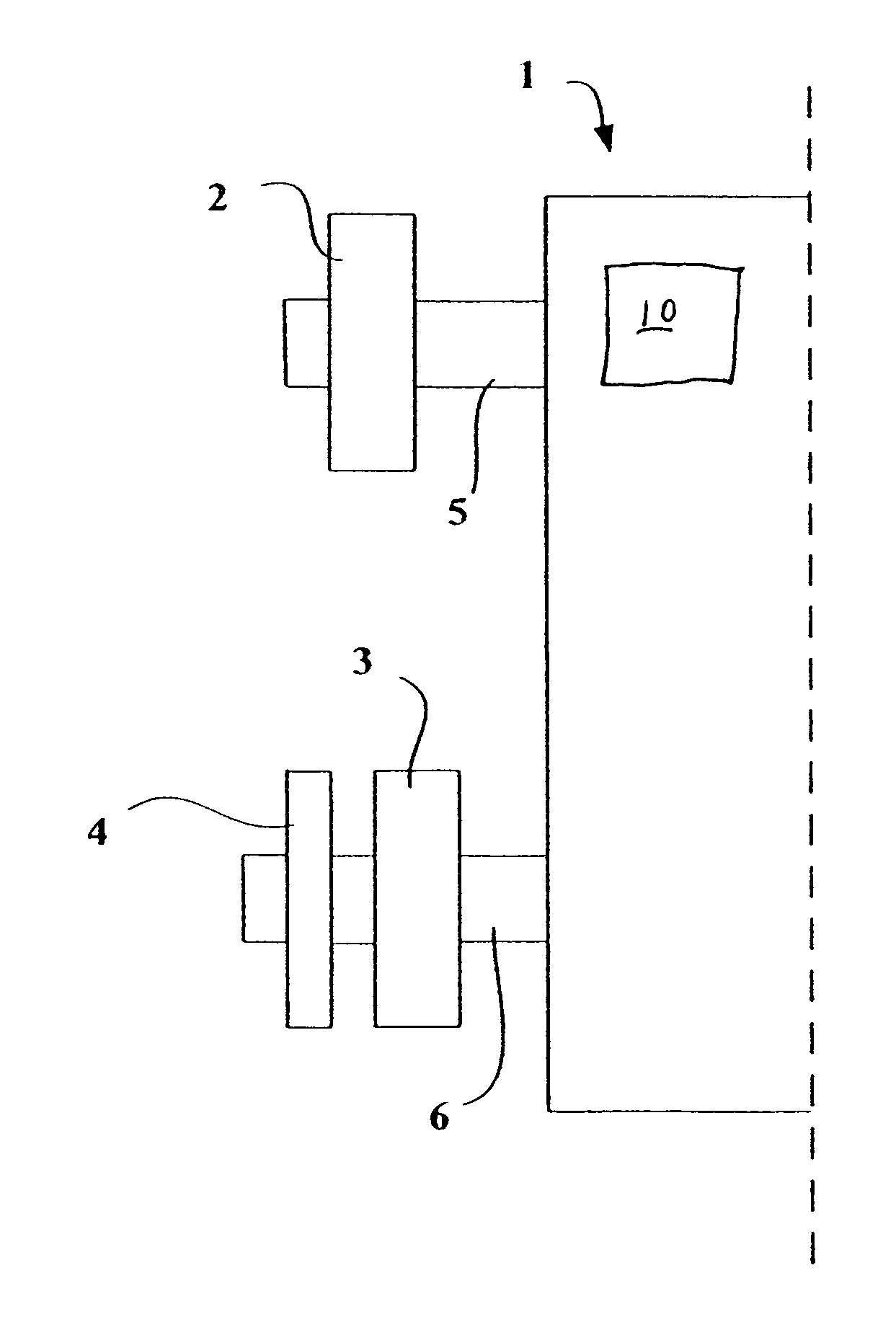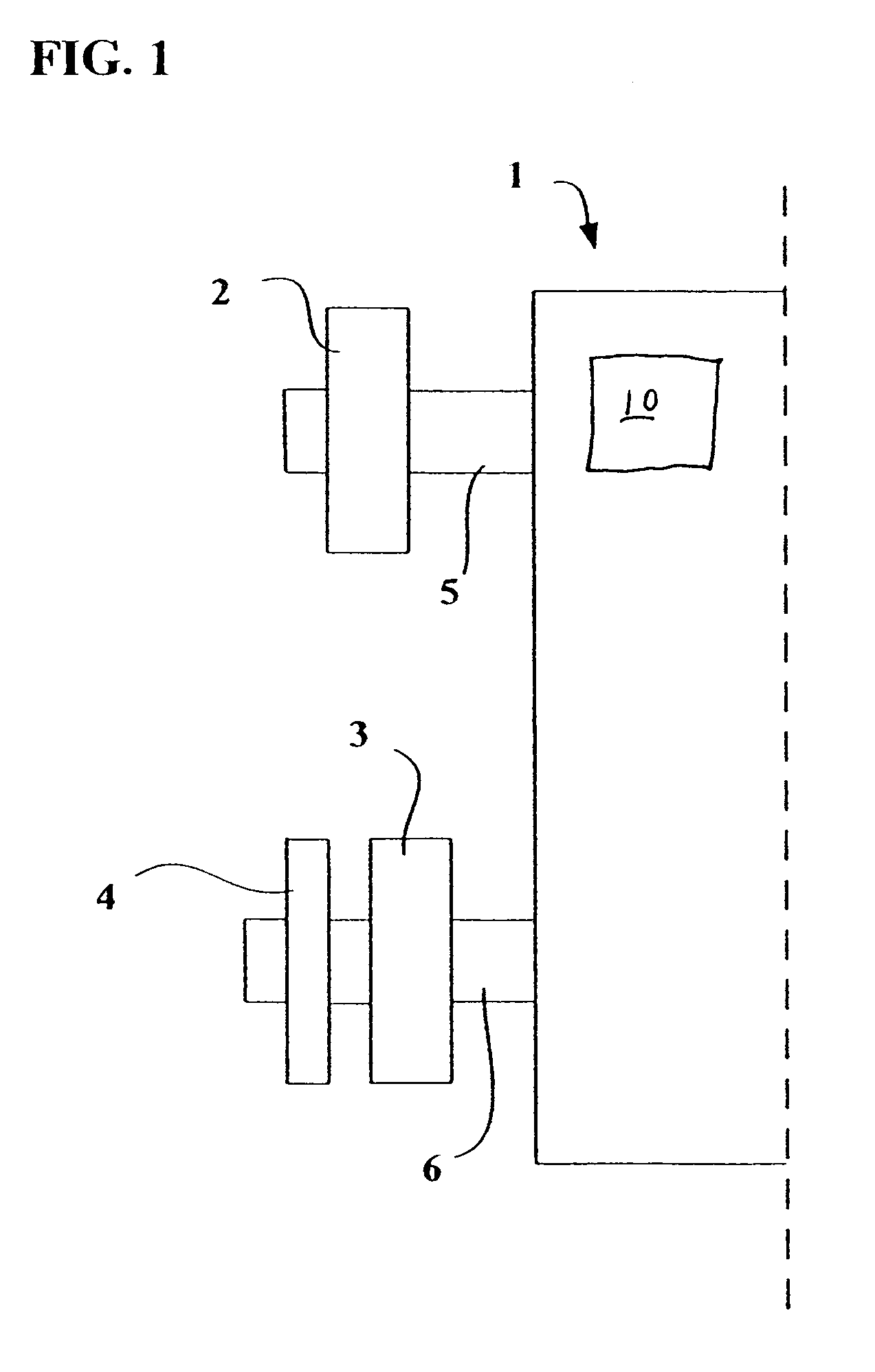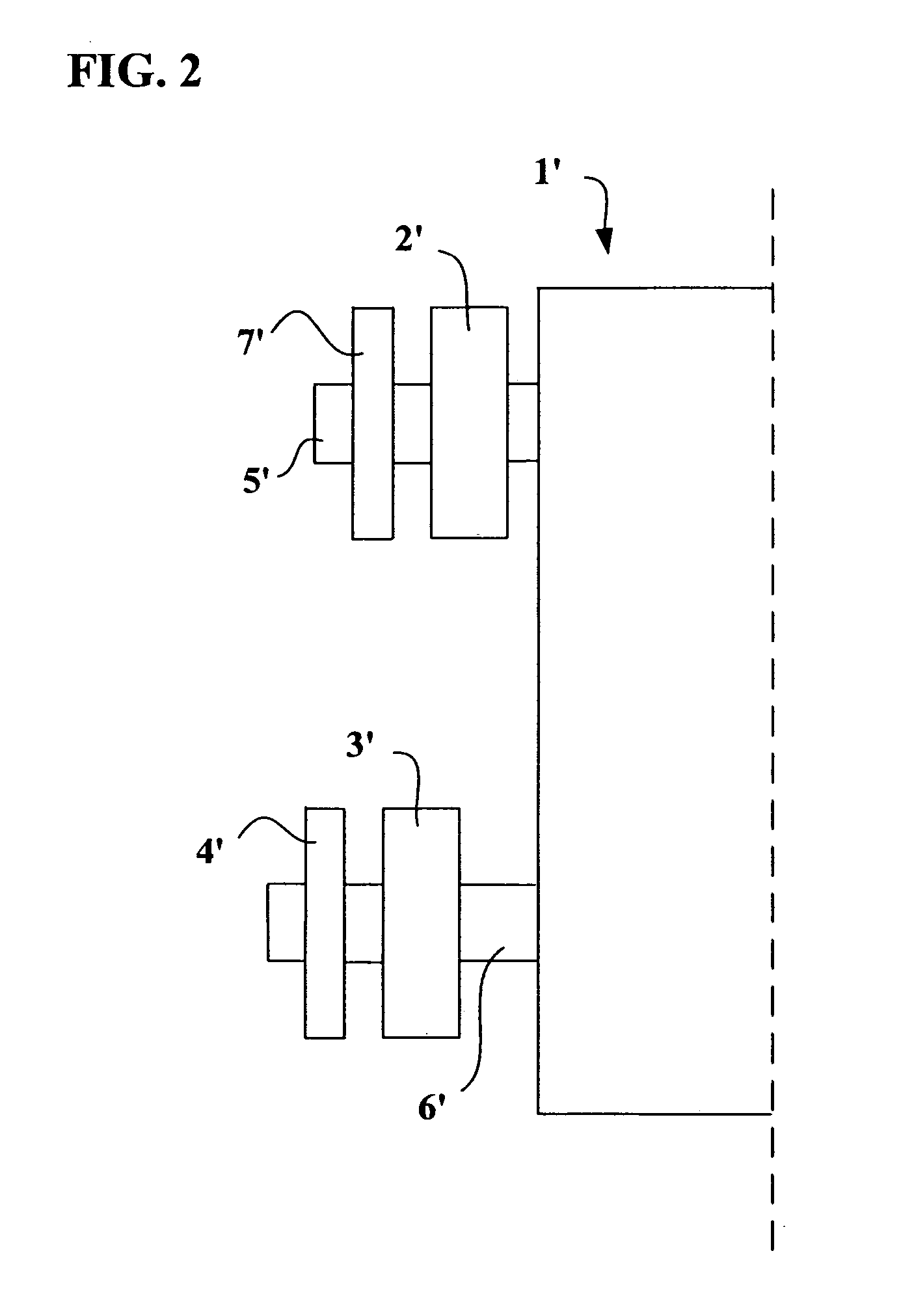Heavy vehicle
a technology for heavy vehicles and heavy vehicles, applied in the field of heavy vehicles, can solve the problems of long time taken for these operations, long and tedious operations involved in mounting and demounting said tires in the event of replacement or maintenance, and the manufacture of these vehicles to increase their loading capacity, so as to improve the efficiency of the vehicle, the effect of slowing down the wear of the tires and facilitating the operation of more quickly
- Summary
- Abstract
- Description
- Claims
- Application Information
AI Technical Summary
Benefits of technology
Problems solved by technology
Method used
Image
Examples
Embodiment Construction
[0041]FIG. 1 is a diagrammatic representation of a half-vehicle 1 embodied in accordance with the invention and comprising an electric motor 10 and six tires distributed over the two axles 5, 6, two of said tires being steering tires on the front axle 5. Since FIG. 1 shows only half of the vehicle, only three tires 2, 3, 4 are shown.
[0042]The vehicle 1 shown diagrammatically in this FIG. 1 is a heavy vehicle having a total loaded weight of the order of 800 metric tons.
[0043]The tires 2 with which the front axle is fitted are large tires whose aspect ratio H / S is equal to 0.50, H being the height of the tire on the rim and S the maximum axial width of the tire when the latter is mounted on its service rim and inflated to its recommended pressure. The tires are of dimension 100 / 50R69.
[0044]The axially inner tires 3 fitted on the rear axle of the vehicle are identical tires to the tires 2 fitted on the front axle of the vehicle and are therefore of dimension 100 / 50R69.
[0045]The axially...
PUM
 Login to View More
Login to View More Abstract
Description
Claims
Application Information
 Login to View More
Login to View More - R&D
- Intellectual Property
- Life Sciences
- Materials
- Tech Scout
- Unparalleled Data Quality
- Higher Quality Content
- 60% Fewer Hallucinations
Browse by: Latest US Patents, China's latest patents, Technical Efficacy Thesaurus, Application Domain, Technology Topic, Popular Technical Reports.
© 2025 PatSnap. All rights reserved.Legal|Privacy policy|Modern Slavery Act Transparency Statement|Sitemap|About US| Contact US: help@patsnap.com



